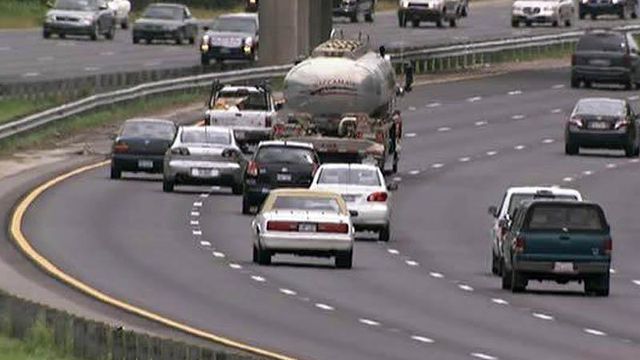Study: Roads cost Triangle drivers $1,350 a year
A national transportation group says drivers in North Carolina's largest urban areas lose $1,350 a year because of lost time and gasoline costs sitting in traffic and because of bumpy pavement or poor safety conditions.
Posted — UpdatedThe group says the costs for drivers in Raleigh, Durham and Charlotte are essentially the same, while drivers in Greensboro and Winston-Salem on average face $900 in expenses because there's less congestion in the Triad. Statewide, poor pavement, traffic congestion and other highway problems cost North Carolina drivers $5.7 billion a year, according to the report.
"Our highways and bridges were once the envy of the entire country – not so much anymore," said Marc Finlayson, co-chairman of the North Carolina transportation advocacy group NC Go!
The TRIP report projects a $65 billion shortfall over the next 20 years to adequately plan, design, build and maintain the state’s transportation system. Forty-five percent of Triangle roads are in poor or mediocre condition, according to the report.
"The consequences of not investing in transportation infrastructure are dire," Finlayson said, citing the August 2007 collapse of an interstate bridge in Minneapolis, which killed 13 people and injured scores more.
"Eventually, transportation infrastructure will rise to the surface. I don't want it to rise to the surface because we have a catastrophe," he said "What we need to do is recognize that we've got a problem (and) address it now before it becomes worse than we care to deal with. I'm confident we will."
In 2008, the traffic fatality rate in North Carolina was higher than the national average, according to the TRIP report. Roadway design was a leading contributing factor in many of the fatal wrecks.
TRIP found that nearly 30 percent of the state's bridges show significant deterioration or don't meet current design standards. State Department of Transportation engineers estimate that 400 bridges a year need to be replaced, but the department has funding for slightly more than 100 projects per year.
"Bottom line – our needs in North Carolina are growing, (but) our revenue stream is not," Transportation Secretary Gene Conti said. "It's critically important we find new and more stable sources of funding."
The study could help state transportation boosters persuade the legislature to approve new ways to raise road construction funds.
Ideas to fund more highway and bridge maintenance include expanding the use of toll roads, increasing the state gas tax and creating a system that charges drivers for the number of miles they drive. Pushing some of the responsibility for road maintenance to the local level is also part of the discussion.
"For local governments, that'll be a hard situation for them to handle," said Paul Meyer, chief legislative counsel for the North Carolina League of Municipalities.
• Credits
Copyright 2024 by WRAL.com and the Associated Press. All rights reserved. This material may not be published, broadcast, rewritten or redistributed.






